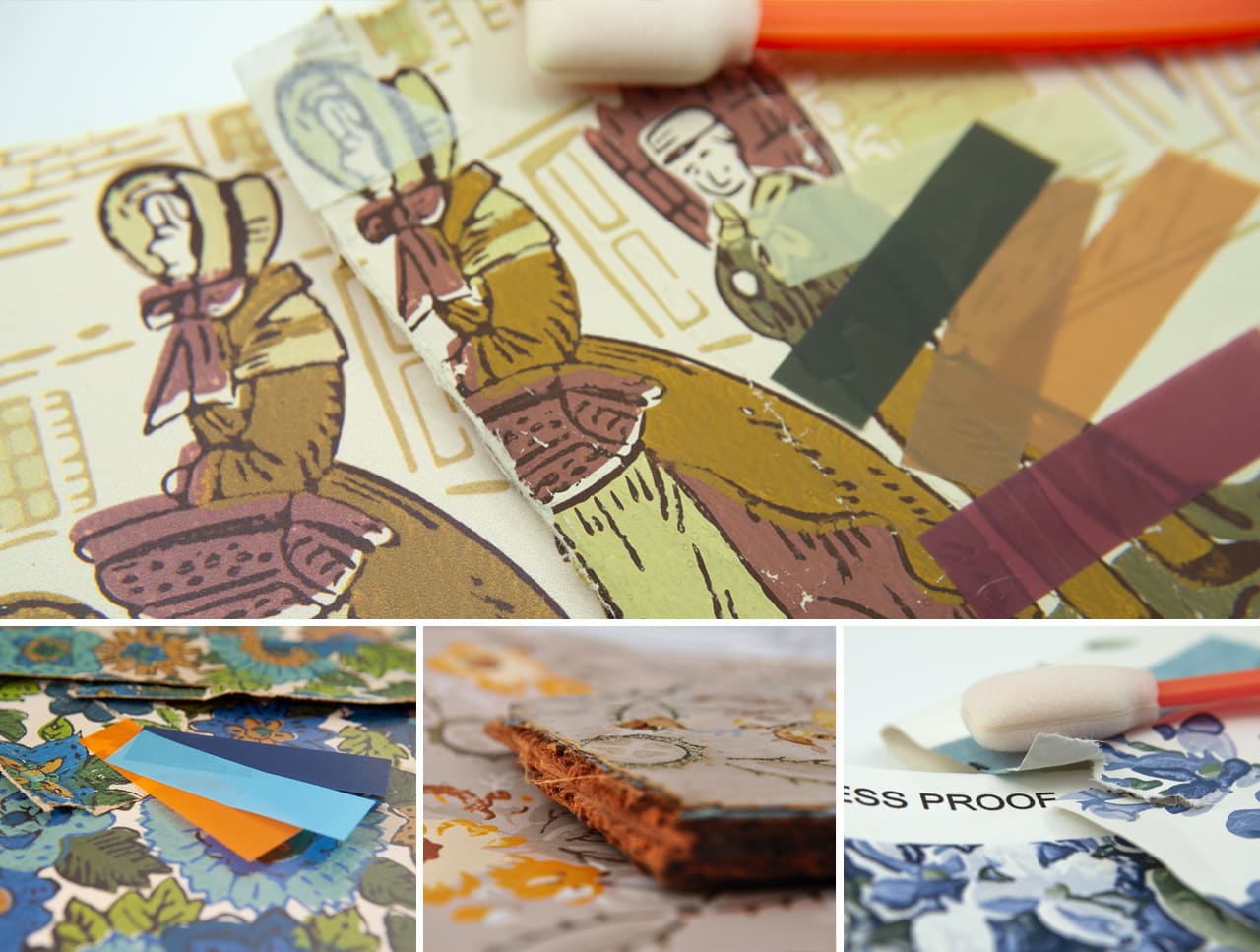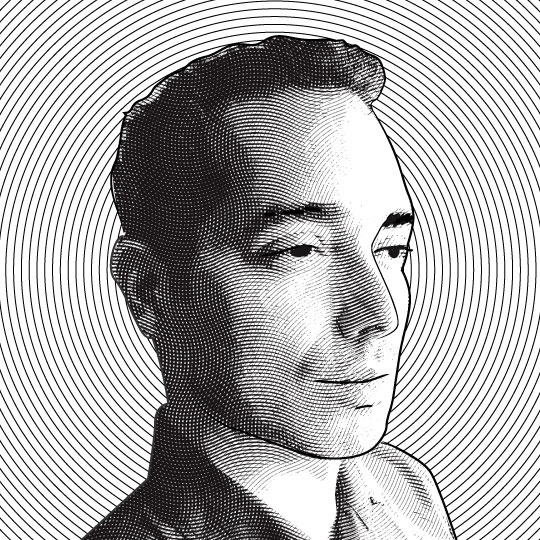Vintage wallpaper is a classic design element that instantly adds nostalgia and atmosphere to any home, office, or workspace. Unfortunately, not every company that manufactures custom wallpaper stays in business, leaving consumers without options when wear and tear take their toll and the discontinued wallpaper needs replacement.
However, thanks to professional wallpaper scanning, photography and digital printing, modern solutions exist that successfully recreate patterns which are difficult or impossible to find on the market.
Getting Started
To ensure an accurate wallpaper reproduction, certain creative and technical considerations are essential.
Step One: Identify the “Core Pattern” of the Design
Is your wallpaper a repeated pattern? If so, replicating the roll will require a full scan of the “design repeat”. Choose any part of the design as a starting point, but aim to provide your designer with enough visual content for a seamless copy.
Case Study #1: Classic Repeated Pattern Wallpaper
For an precise evaluation, your printshop will need to see a clear and complete image of the core pattern. This is attained by finding elements repeated both vertically and horizontally, creating a square or rectangle around the repeatable area.
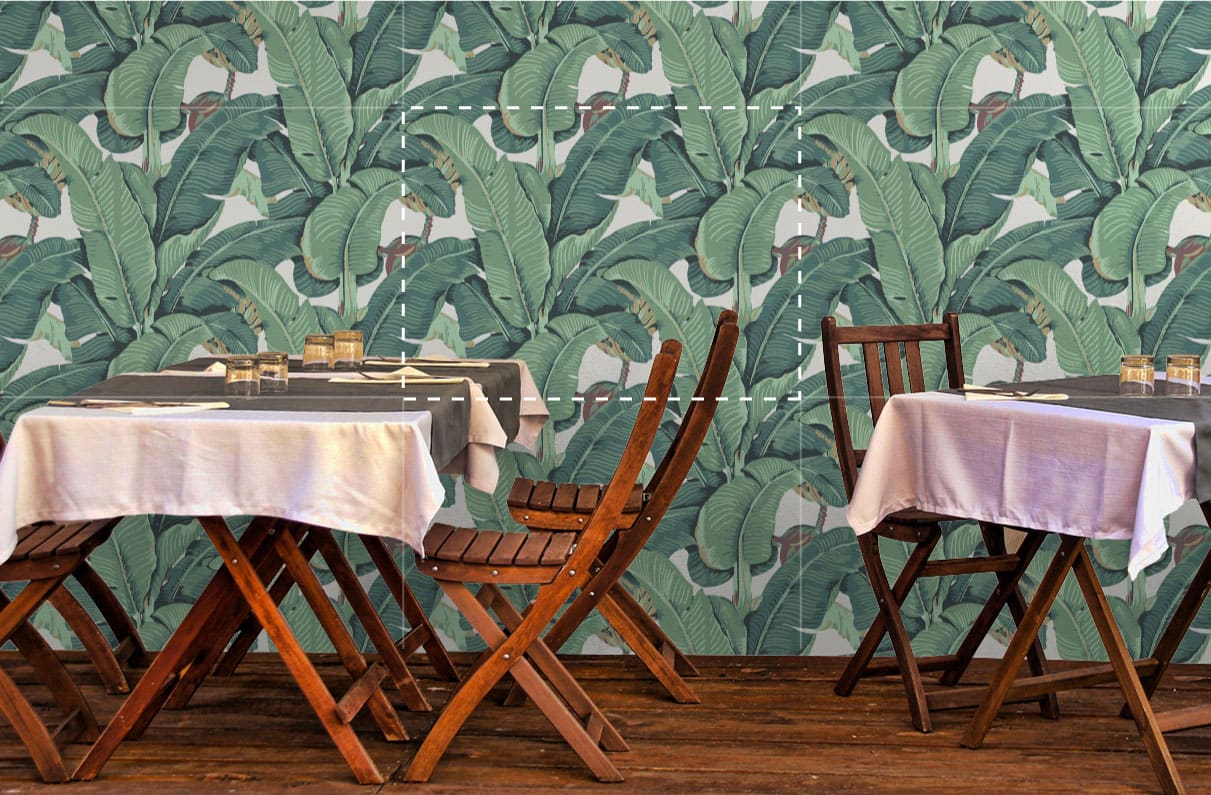
Capturing the entire design is crucial for (A) Getting an accurate price quote and (B) Creating a faithful reproduction. When dealing with severely damaged or missing patterns, an artist may need to recreate parts of the design from scratch.
Note: Be aware of patterns with a “drop” feature. This refers to a design where each consecutive horizontal repeat is slightly offset vertically, resulting in a step-repeat or staggered checkerboard effect. Identifying this pattern early on can save a lot of time and costs associated with scanning your wallpaper.
Case Study #2: Panoramic Wall Mural
For murals without a repeated pattern, the “core pattern” is basically the entire wall. Scanning a sample is impractical; instead, the wall must be professionally photographed, considering angle, camera quality, and lighting to ensure crisp details and uniformity of color and contrast.
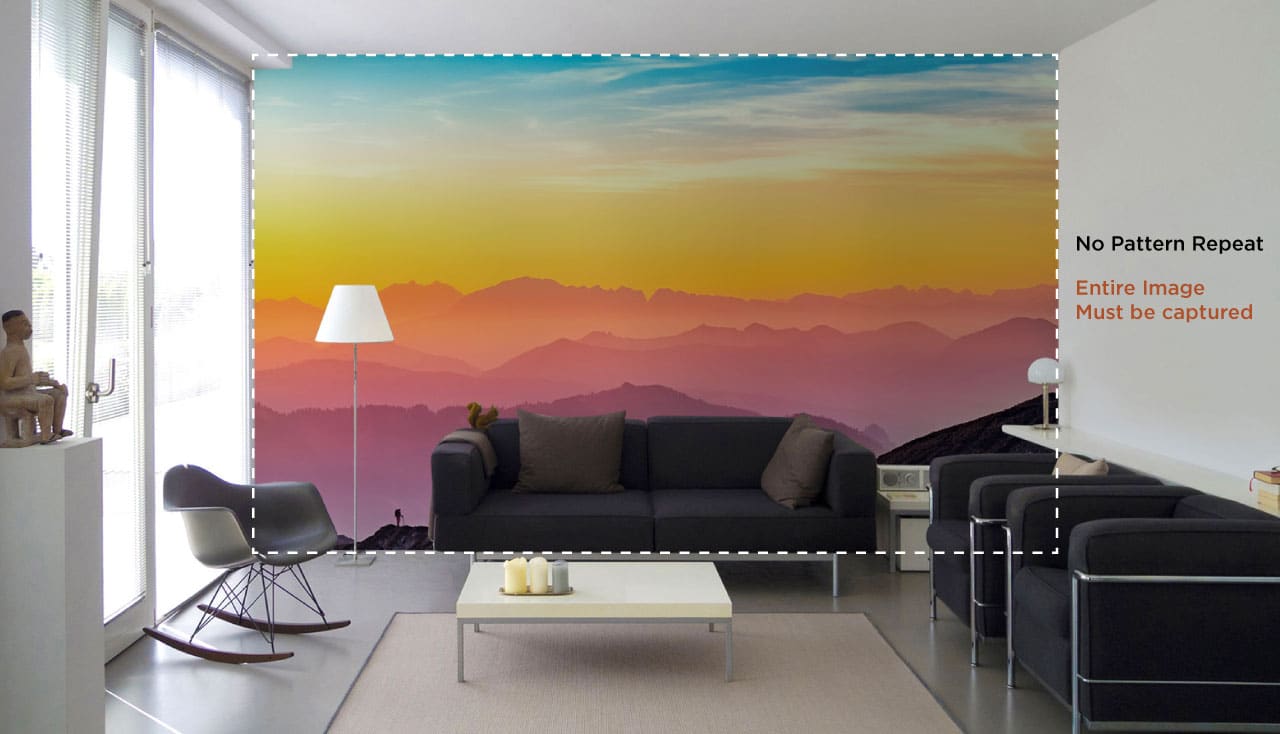
Step Two: Digitize Your Wallpaper
Method #1: High-Resolution Scanning
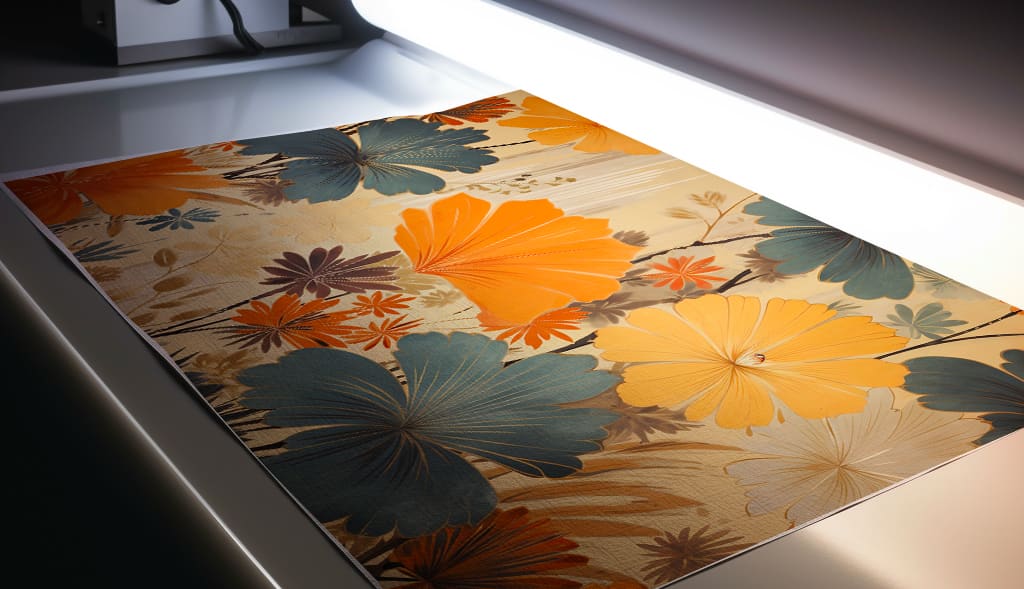
This is the most recommended method for reproducing wallpaper. Professional-grade scanners capture images at the highest resolution, eliminating concerns about lighting and angles associated with digital photography.
Professional scanning captures fine details and textures that cameras might miss, including fabric textures and embossing, adding character to the design. You’ll need to provide an actual wallpaper sample, or if incomplete, a high-resolution photograph of the remaining panels.
Method #2: Digital Photography
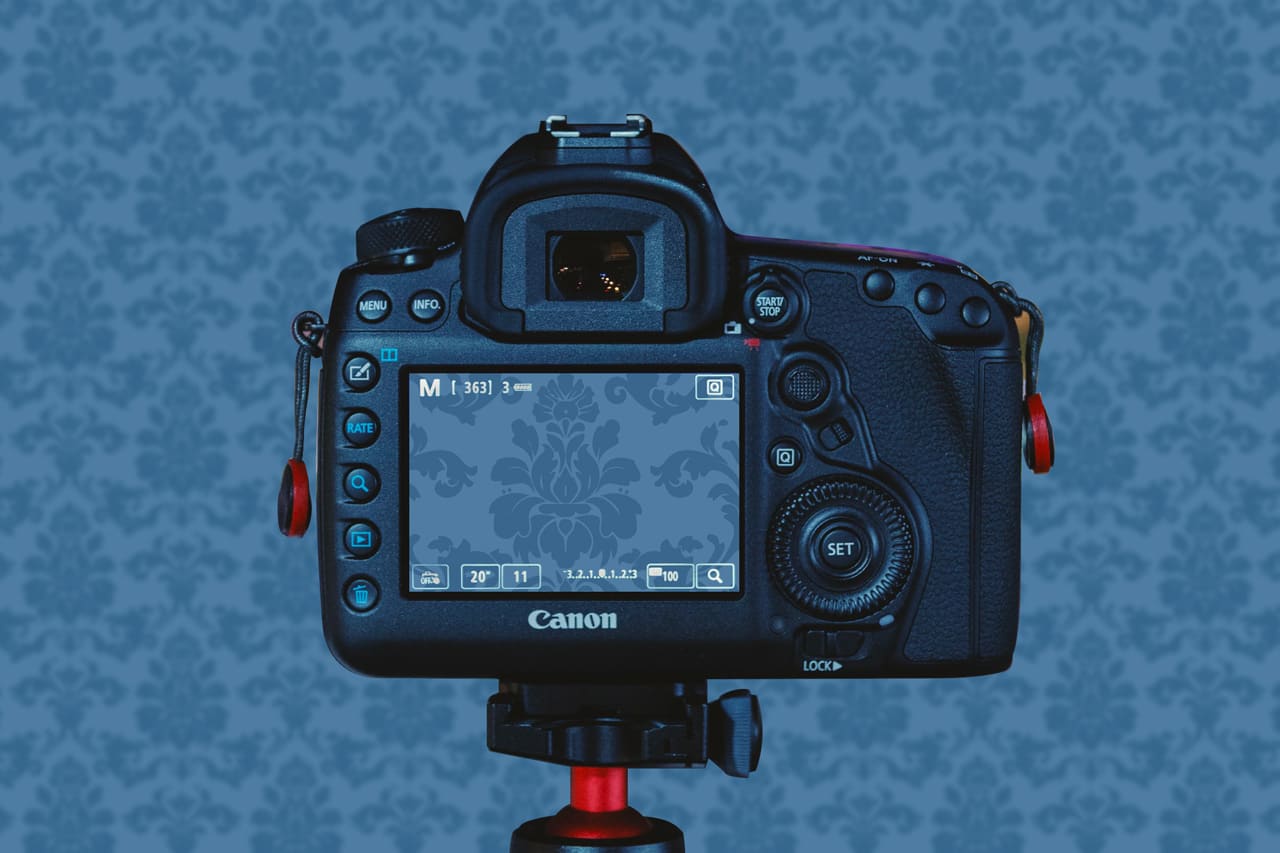
This method requires the highest resolution possible. Smartphones are useful for assessing a project but are not advisable for producing print-ready artwork. We recommend using a professional-grade DSLR camera with maximum resolution settings on a tripod for maximum clarity. Hiring a professional photographer can address issues like lighting and angle, but a DIY approach can also work with careful attention to lighting and camera placement.
The Importance of Lighting in Replicating Wallpaper
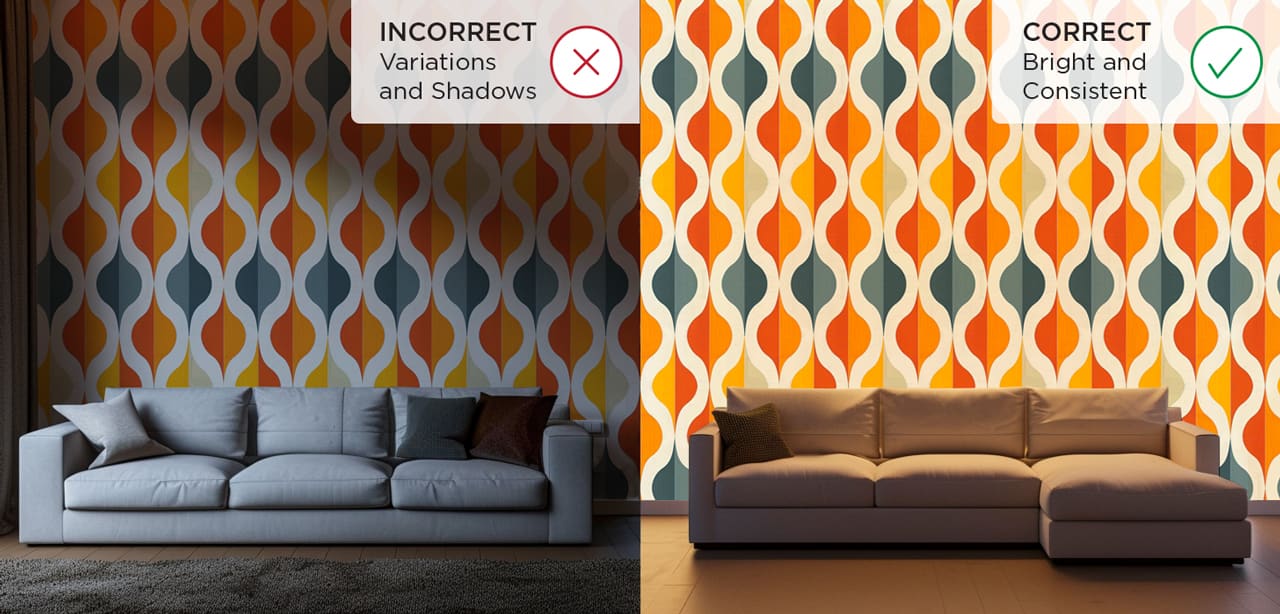
When capturing wallpaper with a camera, lighting will be a primary concern as a loss of details and contrast often occurs in shaded areas. Diffused and uniform lighting is most effective, and one of the top reasons it may be worth hiring a professional with their own lighting equipment. For DIY photography, you can also achieve great results if your room has sufficient windows and there is no direct sunlight.
PRO TIP: A cloudy day at high noon provides the most ideal lighting conditions. Avoid taking any pictures with direct sunlight on your pattern.
Avoiding Distortions with Good Placement
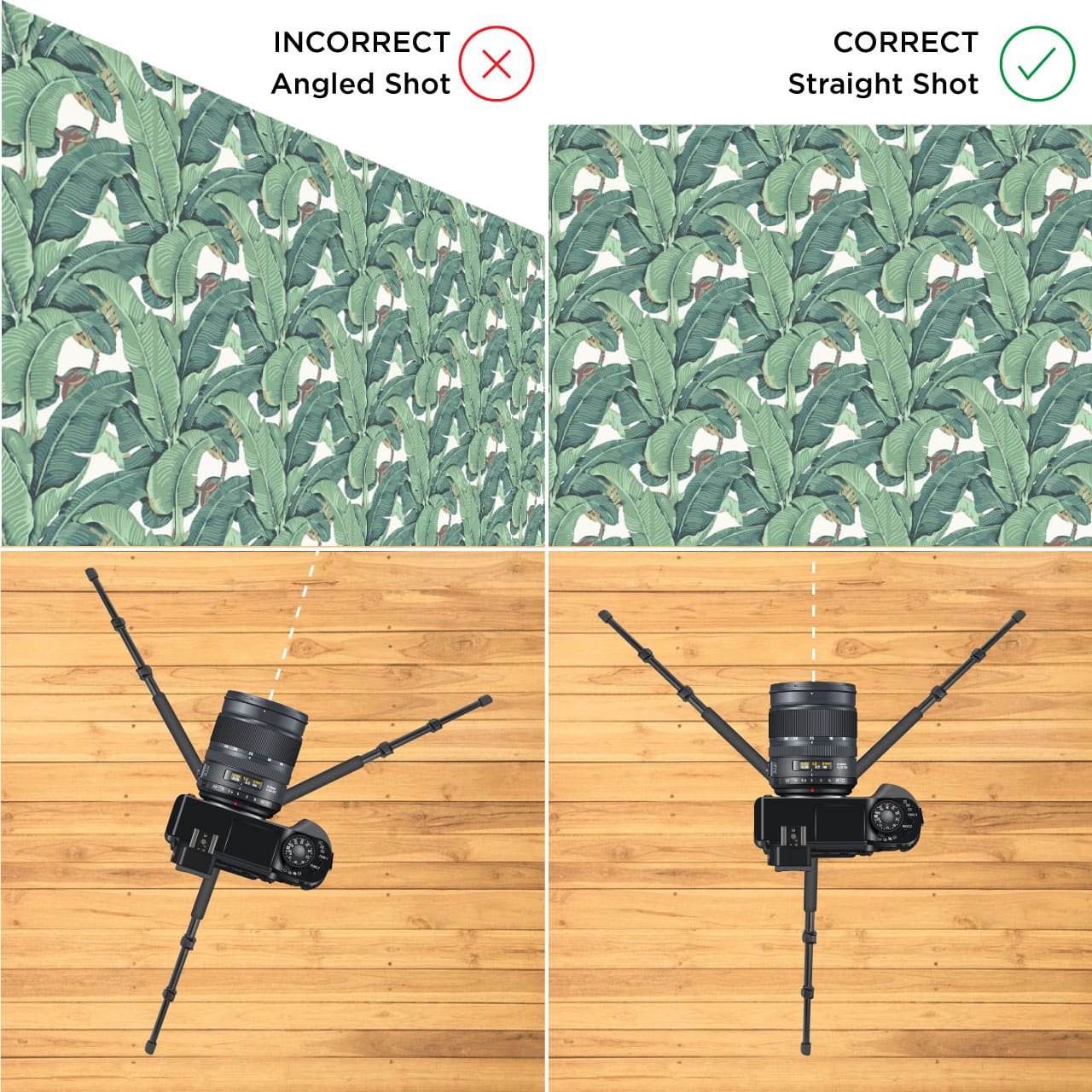
Ensure the camera is parallel to the wall and facing directly ahead. This helps to avoid both perspective warping and the blur that often occurs based on the camera’s distance from the target.
PRO TIP: For interior shots, a 16-35mm lens is recommended; for smaller sections, 35-200mm lenses are suitable.
Choosing the Appropriate Methods For Wallpaper Replication
We recommend high resolution scanning for most cases, however the method which will work best for you depends on a number of variables:
- Budget (both time and monetary cost)
- Repeat Patterns vs Panoramic Murals
- Design complexity and intricacy
- Photography skills or access to a professional
- Physical condition of the existing wallpaper
Seeking Professional Wallpaper Assessment
To get an accurate quote for your wallpaper replication, it is advisable to take two daytime sample photographs:
- Image #1: Shot of the entire wall to identify core patterns.
- Image #2: A close-up of the pattern, to assess colors and the level of detail.
These images are for evaluation purposes, so a smartphone or consumer-grade camera should be sufficient to provide an assessment and estimate for reprinting your wallpaper
A Word on Wallpaper Covering Materials
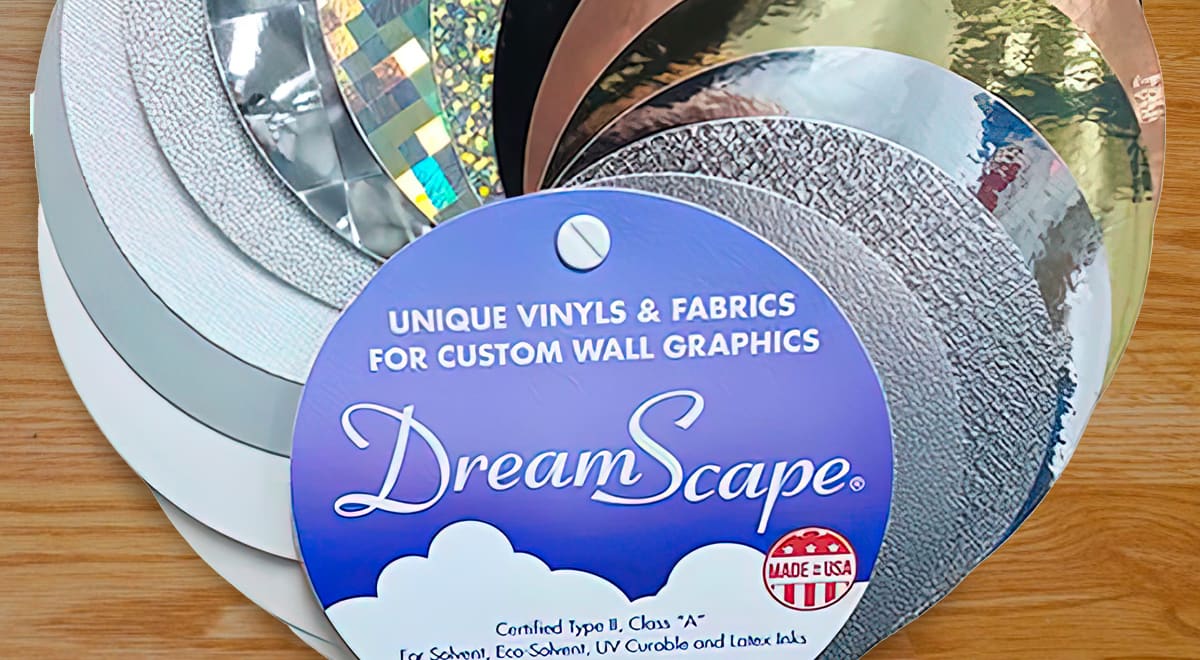
Printable wallcoverings come in various finishes, textures, and materials. The finish and quality of these materials can vary greatly depending on the manufacturer. Always request a “press proof” before final production.
When contacting a print shop, include your evaluation photos and describe the desired texture, look, and finish to expedite the process.
About Pricing
The cost of duplicating wallpaper is assessed based on characteristics which are unique to each project:
Digital Recreation of Old or Out of Stock Wallpapers
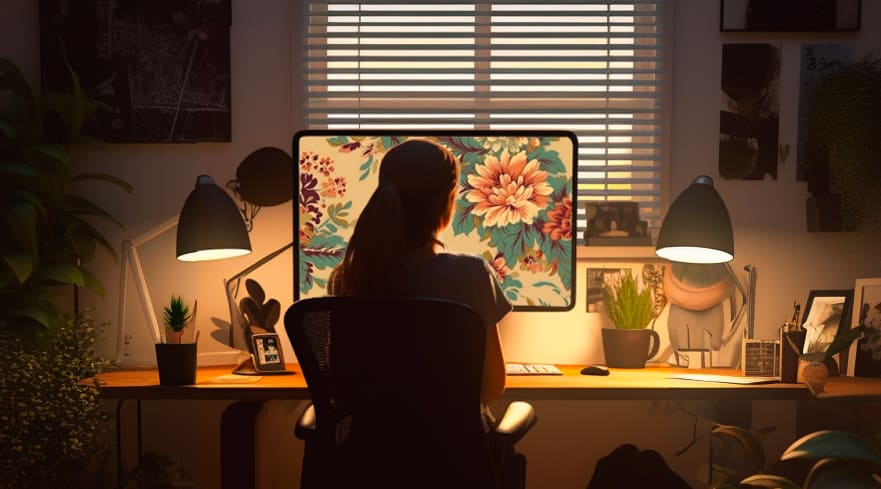
This service includes scanning, retouching, and illustrating to create a printable file. Costs vary based on the state of the original wallpaper, completeness of the sample, color matching needs, number of colors, and design complexity.
Due to the numerous factors involved in each wallpaper design you will need to consult a printshop directly to determine the scope and complexity of attaining your wallpaper replica.
The cost of this process is determined by:
- State of the Original Wallpaper: Does it need a lot of retouching?
- Completeness of the Sample: Are there areas missing? An artist may need to render them by hand.
- Color Accuracy: How close does it need to be? It can be more time consuming to match an existing wall than print a new one from scratch.
- Number of Colors: A designer will need to trace and isolate each one, adding time to the design budget.
- Design Complexity: Is your core pattern large or contain lots of details? You may require higher resolution scans.
Wallpaper Matching & Printing
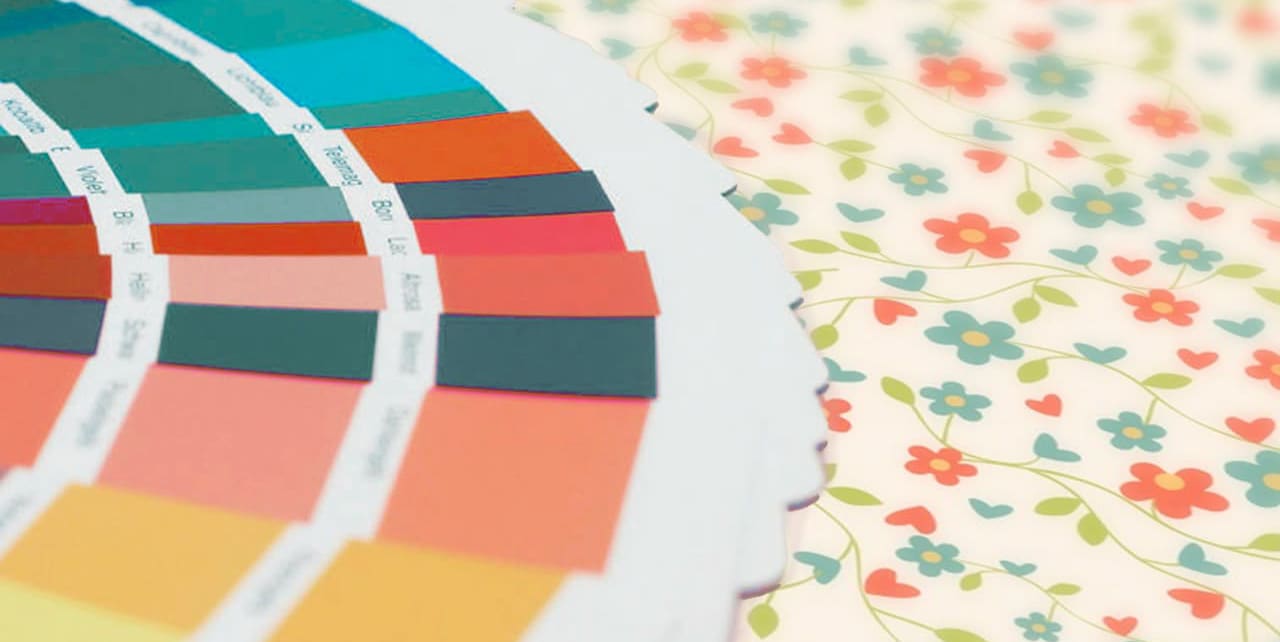
Consider purchasing a sample or “press proof”. This is when your design is printed at actual size on the same exact material, so you get an accurate preview of what your final rolls will look like.
If color matching is critical for your project, especially for historic wallpaper replicas there’s a strong possibility that multiple rounds of samples may need to be purchased. Expectations on timing and cost should be adjusted accordingly. Letting the colors have some wiggle room definitely expedites projects and keeps the cost down.
NOTE: Digital printers using CMYK and UV inks might not perfectly match certain colors, especially metallic/solid inks or exotic pigments.
Total Pricing Variables
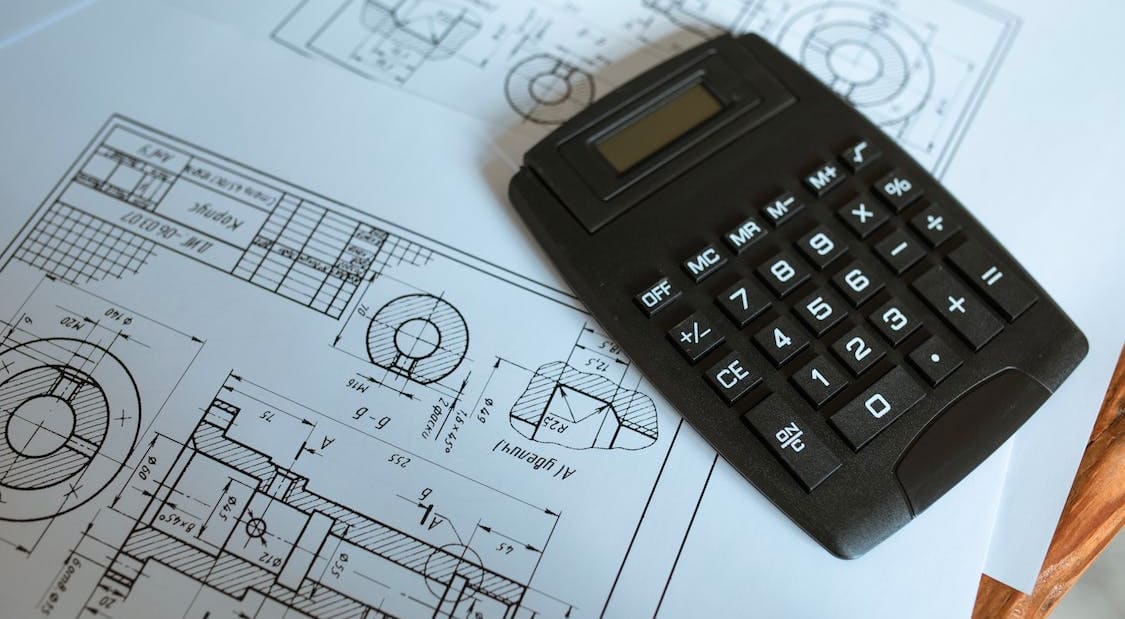
Square Footage: In our experience 100-150 square feet is about the average requested size. If you don’t know what your area is, you can get it simply by multiplying the width of a wall (in feet) by its height. Feel free to use our free Wallpaper Calculator and get a total measurement of all your walls.
Number of colors: As we mentioned earlier, the complexity of your project is directly tied to the number of colors that appear in your pattern. The necessity to print samples and provide small palettes of options adds to production time and material cost and will be factored into your estimate accordingly.
Material/Stock: Most print shops will offer traditional wallcoverings with lots of textures/effects. These typically are installed in a traditional fashion using a special paste. A more economic and speedy option is “peel and stick” wallpaper, which comes with its own adhesive backing.
Printing Method: In the case where you are not satisfied with the results of a digital press, there are other options, including screenblock printing, which can more faithfully reproduce certain designs. These methods are time-consuming, costly, and beyond our area of expertise.
Advantages of Digital Reproduction & Printing
Digital layout allows replicated wallpaper rolls to be tailored for each space, ensuring a perfect fit, easier installation, along with reduced waste & cost. For step repeat patterns, your installer will no longer need to measure each vertical drop since these panels are designed for easy, side-by-side installation.
Digital Printing is also far more time & cost effective for replication as opposed to more traditional methods like custom block printing, which are more elaborate and time consuming processes which demand a very special expertise.
Yet another advantage is the longevity of digital artwork. Simply store your file in a backup service like Dropbox or Google Drive. It will be easy for you to send out if you ever need a reprint of your wall. We’ve also had instances of homeowners breaking down walls or expanding the footprint of their home. In this scenario, being able to order more rolls makes life a lot easier.
Disadvantages of Digital Printing
As mentioned earlier, matching of certain inks and colors may not be possible with the digital CMYK process and inks. Deeply saturated hues, metallics, fluorescents, etc can only be approximated.
Traditional wallpaper printing methods often leave thick layers of paint which provide additional texture. Since digital printing relies on the paper absorbing all the ink, rather than sitting on top of it in a thick layer, this effect is not achievable
Limitations on the types of materials you can print on. Wallcoverings for digital printing must be specially manufactured for this purpose, whereas traditional screen or block printing can be applied to almost any material, including paper.
We’ve found these cases to be very rare, but they are worth mentioning if you find yourself in the market for reproducing old specialty wallpapers for a historic renovation project.
Our Experience
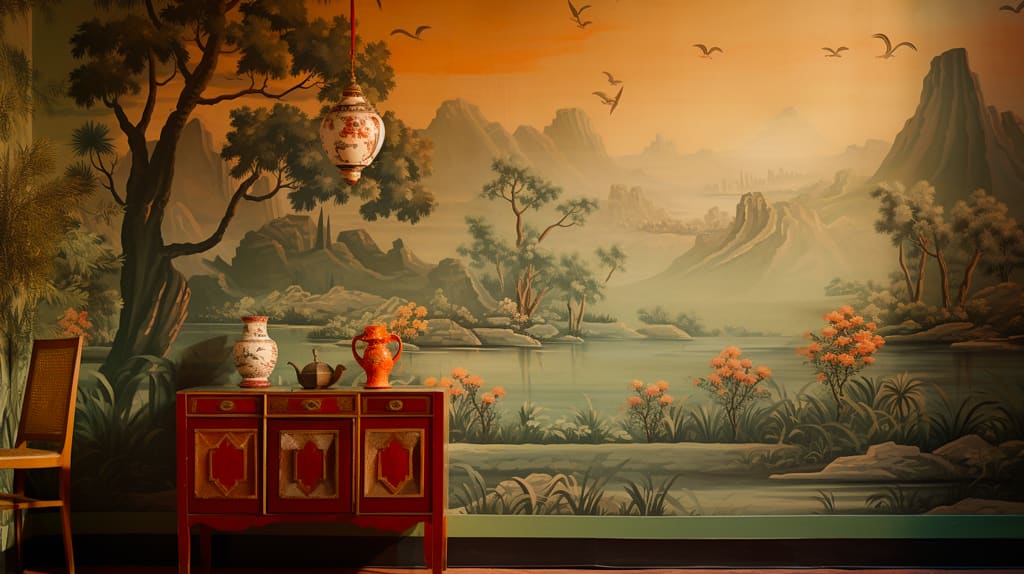
Built on decades of printing knowledge, and a love of history and conservation, wallpaper reproduction has become our most popular service by far. When ebay, craigslist and all the fruitless internet searches have exhausted the hope of the people, Fine Print NYC is the #1 place they turn to for reprinting wallpapers which are discontinued, out-of-print or damaged beyond repair.
This is what we do all day, every day. And we love it! If you have any questions or would like to send us some samples, feel free to contact one of our project managers at inquiries@fineprintnyc.com. We are also available to take your call from 9:30AM-5:30PM EST at (212) 619-5446.
